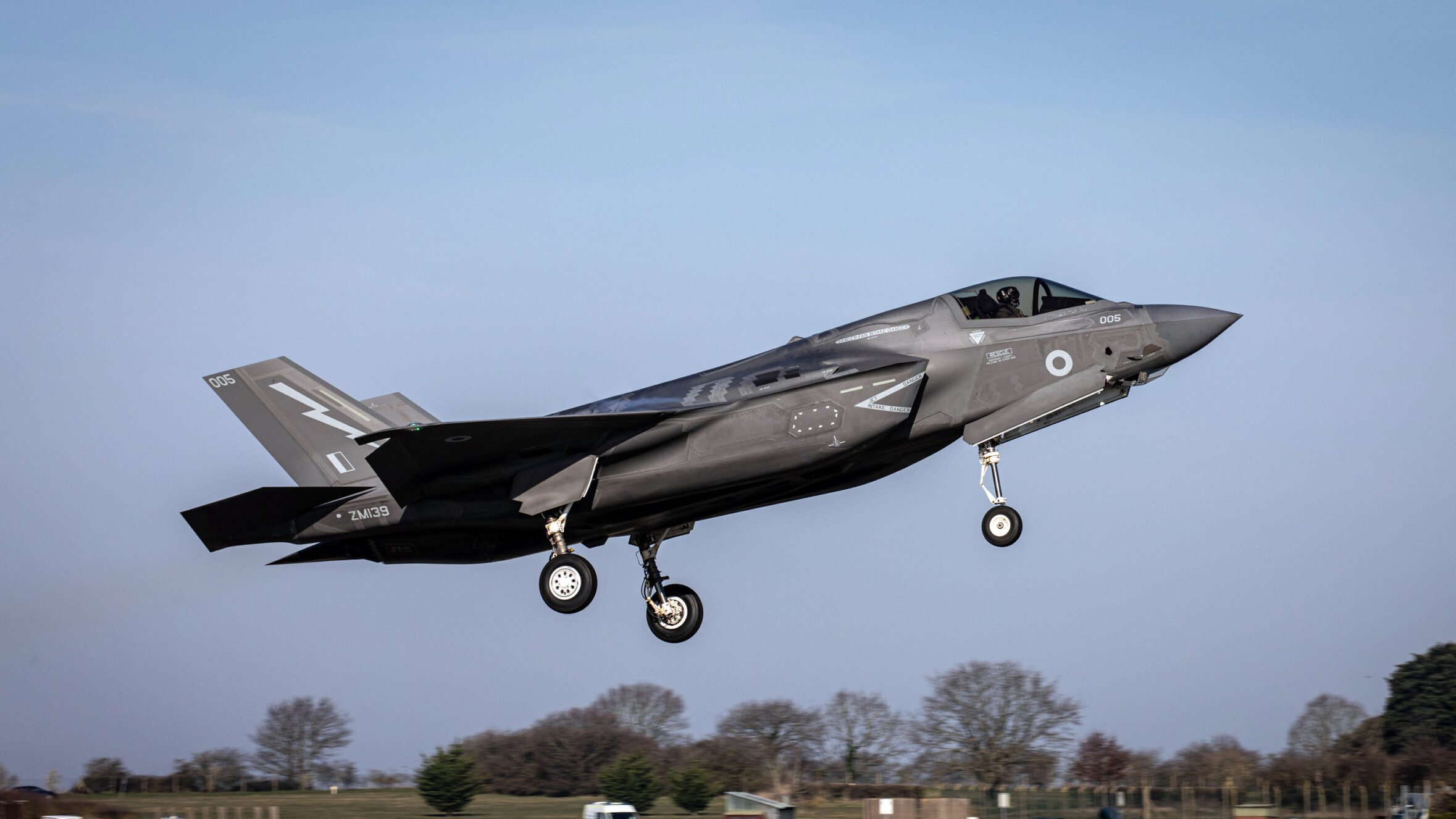
A F-35B Lightning jet from 617 Squadron takes off from RAF Marham to take part in an air maritime integration exercise (UK MoD)
WASHINGTON — The Pentagon is once again accepting new F-35 Joint Strike Fighters from Lockheed Martin, a spokesman for the F-35 Joint Program Office said in a statement, lifting a months-long pause put in place after the crash of an F-35B in December.
“The Defense Contract Management Agency and F-35 Joint Program Office resumed acceptance of F-35 aircraft today from Lockheed Martin and are currently working with the U.S. services, partner nations and foreign military sales customers on the movement of aircraft to their operational units,” JPO spokesman Russ Goemaere said. “Prior to acceptance, the aircraft passed extensive technical and flight worthy checks ensuring their readiness for operational use.”
Air Force Lt. Gen. Mike Schmidt, the program executive officer for the JPO, said in a statement, “The Government and industry team worked tirelessly on this effort and their work demonstrates true professionalism and a devotion to accomplish complex missions with stringent ingenuity. The safety of our warfighters is always our highest priority.”
The December crash of the F-35B, captured in a viral video showing a pilot safely ejecting from a fighter that smacked nose-down and spun out of control on a runway at Naval Air Station Joint Reserve Base Fort Worth, had prompted officials to ground an unspecified number of F-35s and halt the acceptance of new jets as well as F135 engines as an investigation proceeded.
During the crash inquiry, officials identified a vibration issue, known as harmonic resonance, and cleared engine deliveries to resume on Feb. 24. After an executive from engine-maker Pratt & Whitney subsequently indicated that new hardware was being introduced to engines in production and in the field in response to the issue, the JPO ordered the global Joint Strike Fighter enterprise to carry out a fix to mitigate the harmonic resonance problem, which the office said would enable grounded fighters to return to flight. The crash inquiry, led by Naval Air Systems Command, has not yet formally identified the cause of the December crash.
Goemaere told Breaking Defense today that the program carried out the mitigation effort for the harmonic resonance problem on the jets awaiting acceptance from Lockheed, and following the mitigation and safety flights, acceptances of the aircraft resumed. Lockheed previously said it was on track to meet a goal of 148 deliveries in 2022, but missed it by seven as a result of the pause, according to a report in Defense News.
“Collaboration and partnership have been on full display as the joint team determined solutions and resumed F-35 deliveries,” Bridget Lauderdale, F-35 vice president and general manager at Lockheed Martin, said in a statement today. “We are committed to equipping the warfighter to safely and effectively operate the unrivaled 5th Generation capabilities of the F-35.”
Until recently, the Air Force had been weighing whether to develop a new, adaptive engine for the fighter through an effort called the Adaptive Engine Transition Program. During a briefing on the service’s fiscal 2024 budget with reporters, Air Force Secretary Frank Kendall revealed the service has chosen not to pursue the new engine in its FY24 budget request and will instead seek funding for an upgrade plan backed by Pratt. It’ll be lawmakers, however, who have the last word on that.
In a ‘world first,’ DARPA project demonstrates AI dogfighting in real jet
“The potential for machine learning in aviation, whether military or civil, is enormous,” said Air Force Col. James Valpiani. “And these fundamental questions of how do we do it, how do we do it safely, how do we train them, are the questions that we are trying to get after.”


























